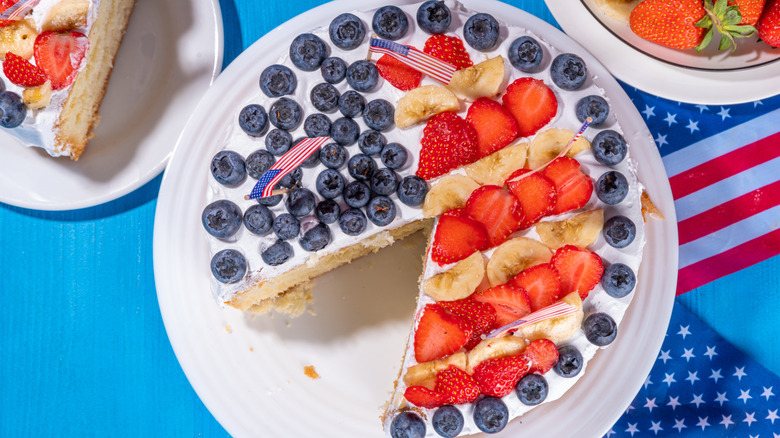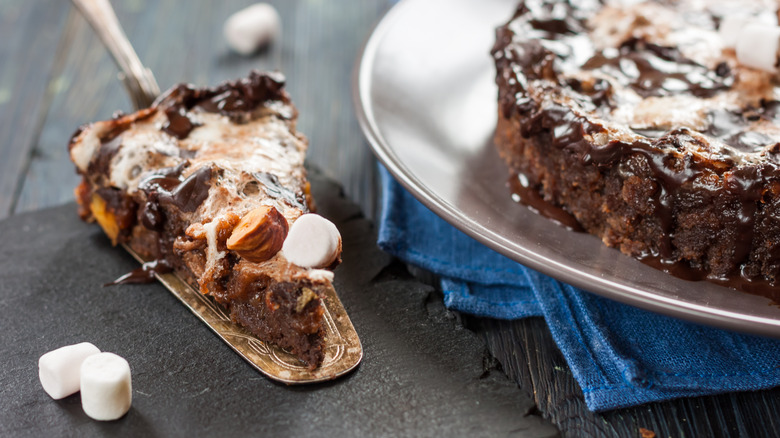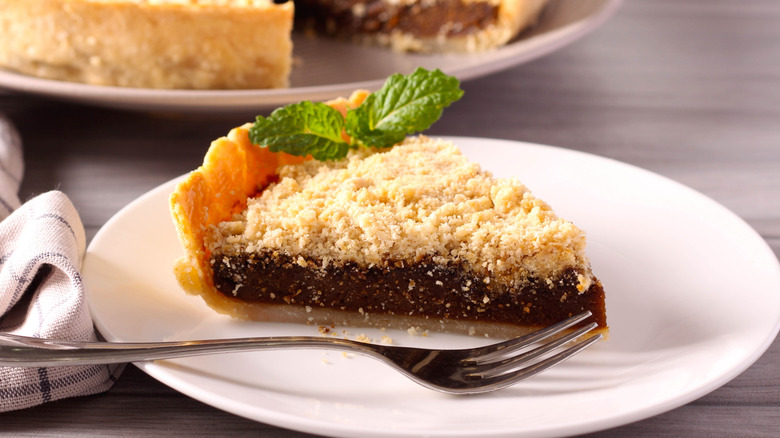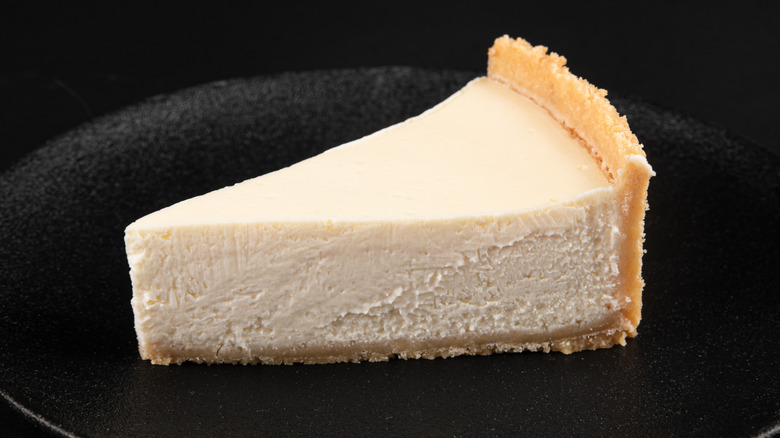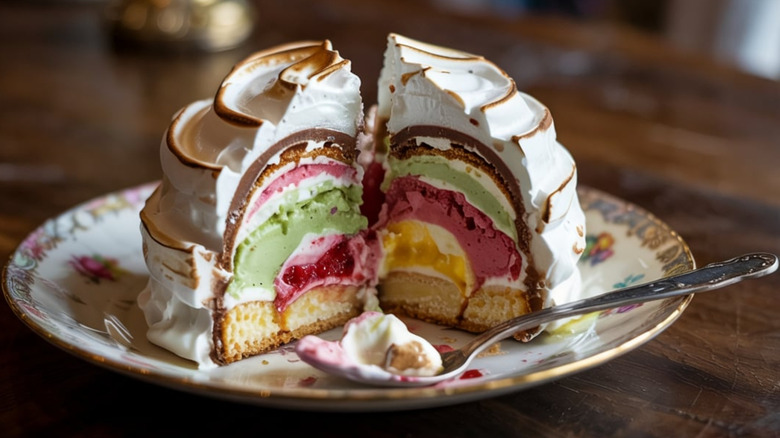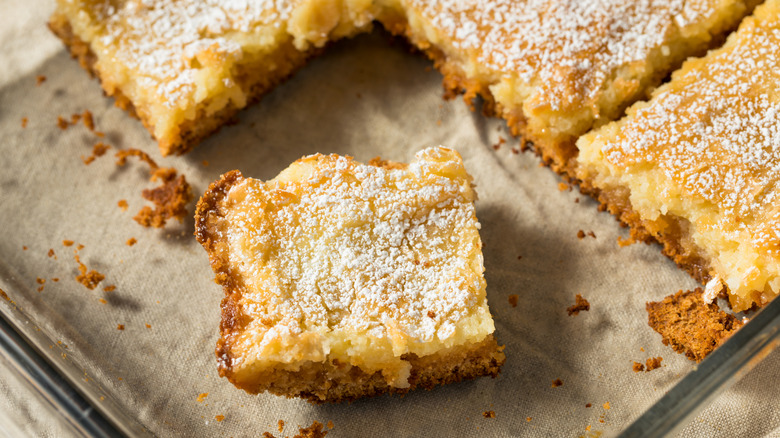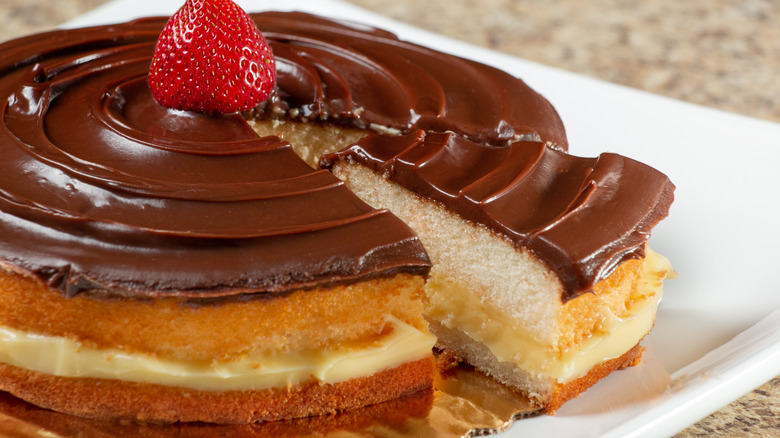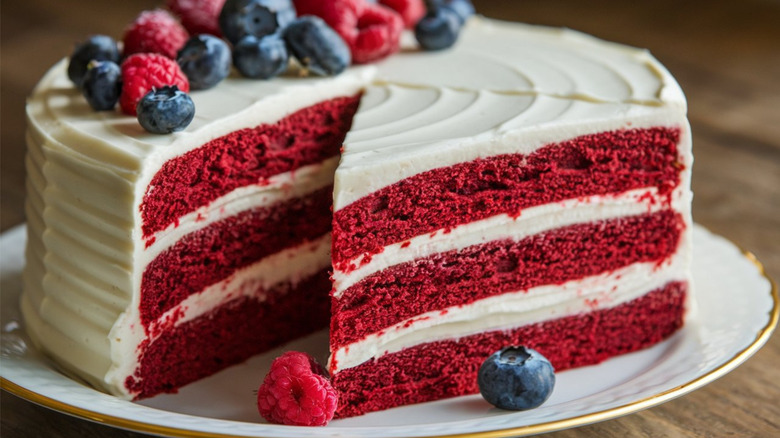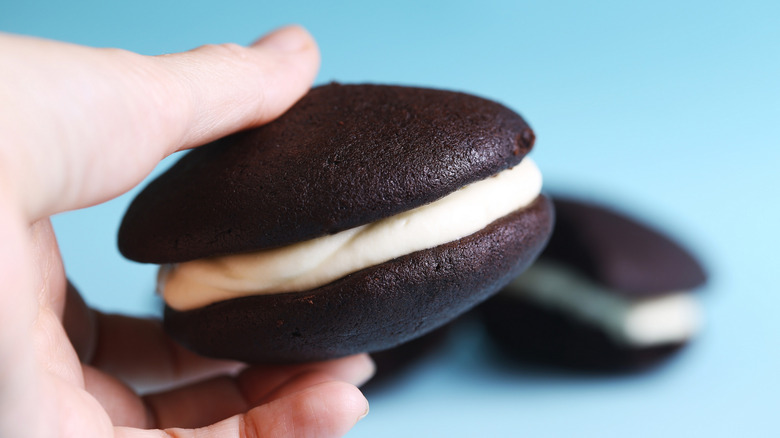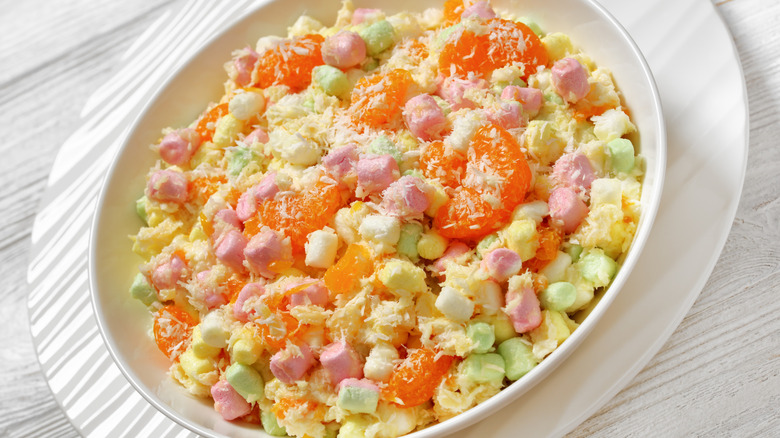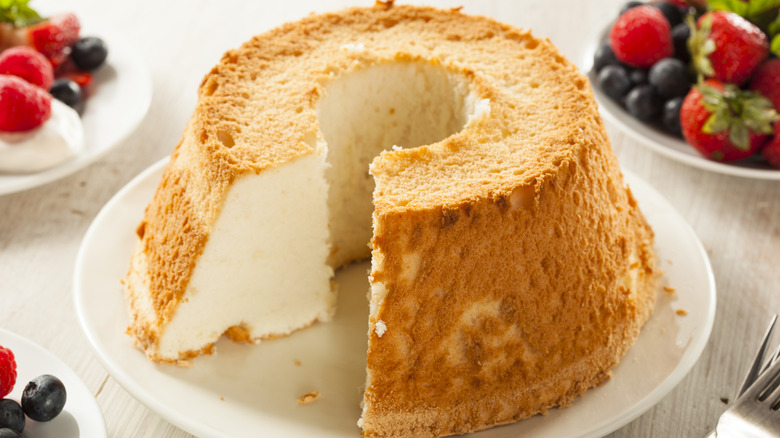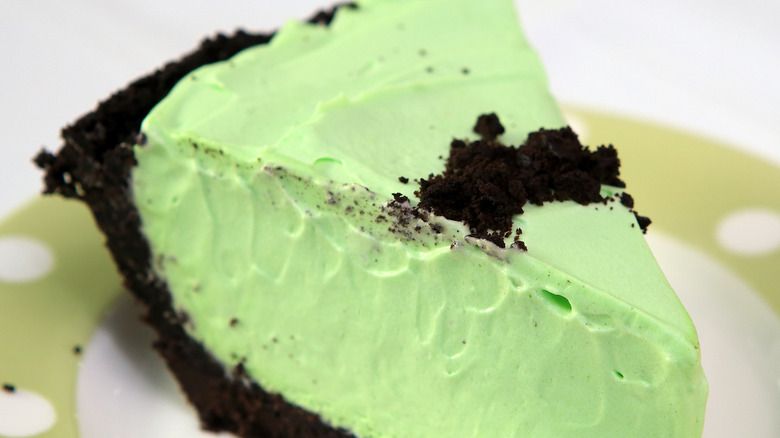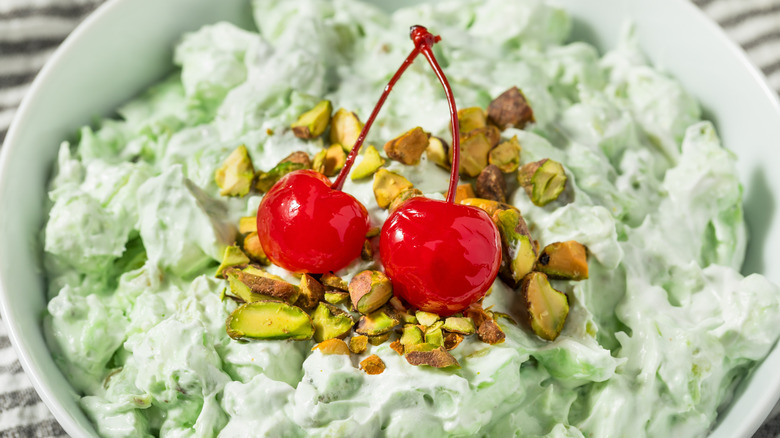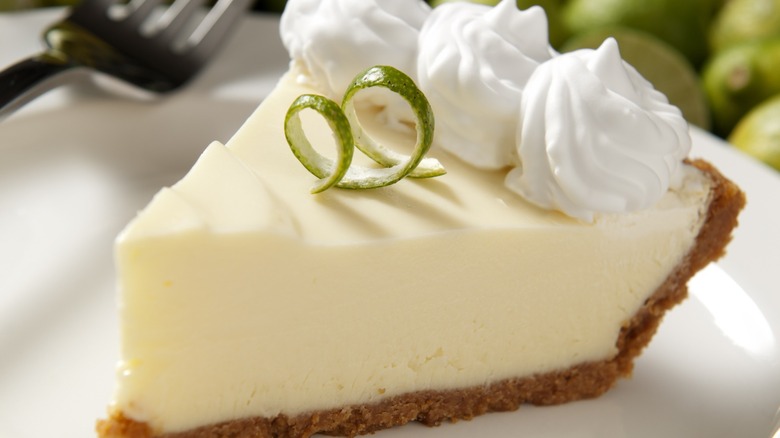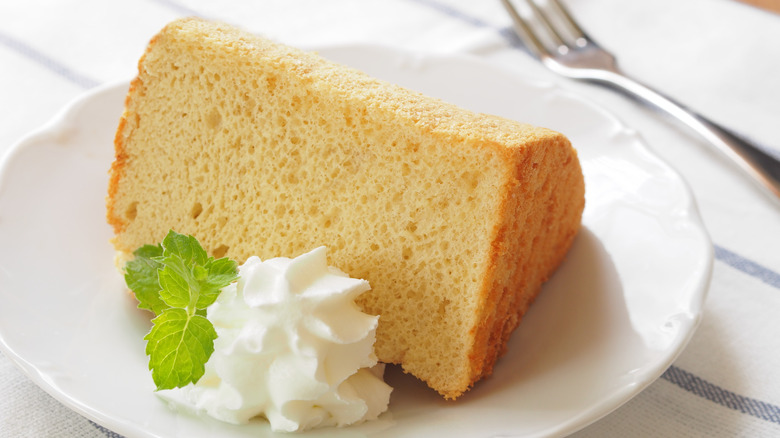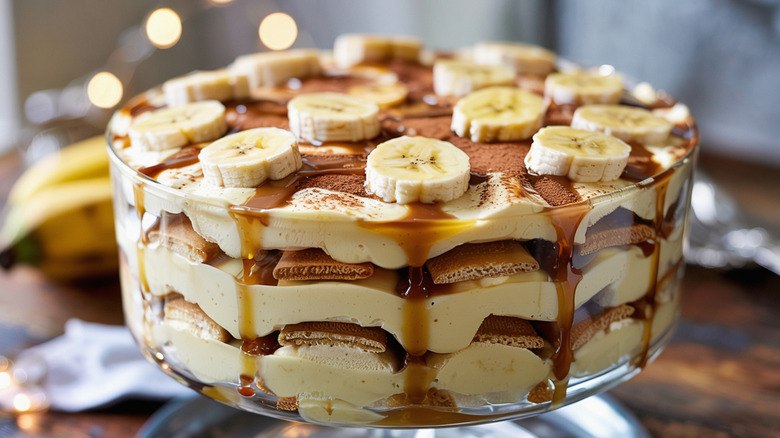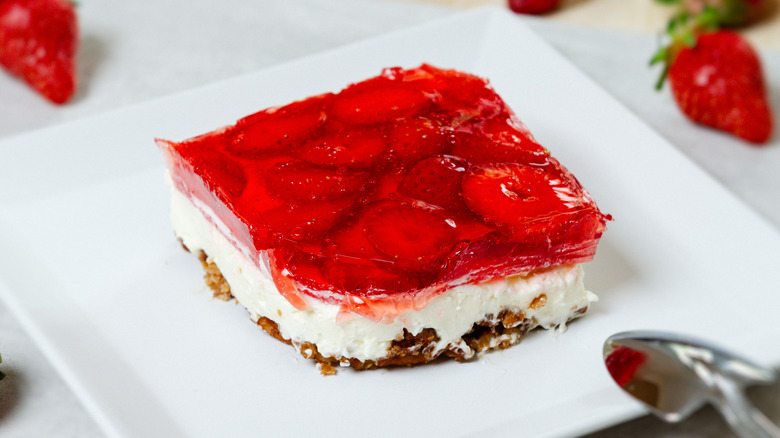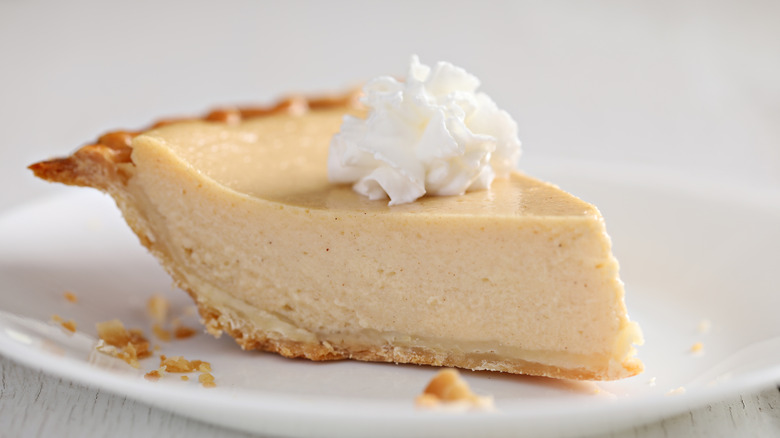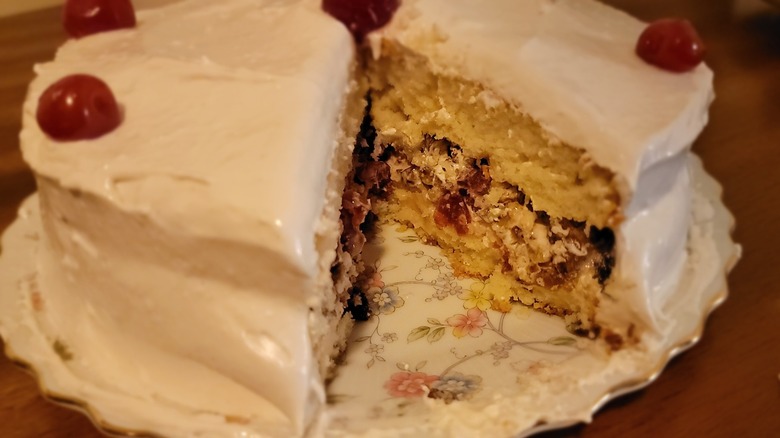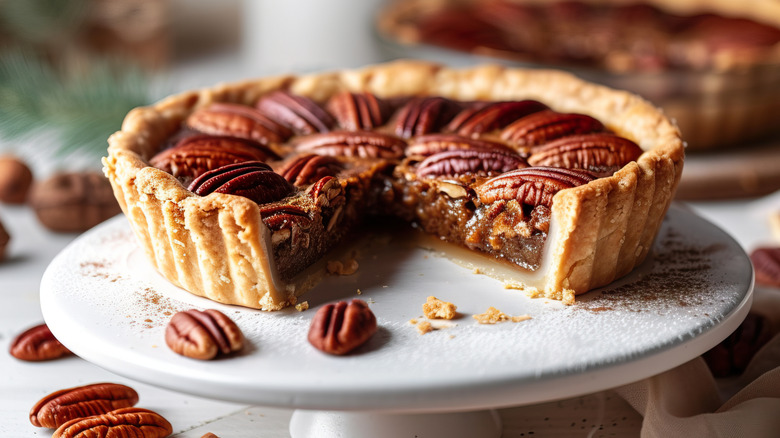20 Classic Desserts That Are Distinctly American
We may receive a commission on purchases made from links.
In recent times, the classic apple pie dish has become synonymous with the country's identity, and nothing is more quintessentially American, it seems. Intriguingly, apple pie has its historic roots in Europe and only became a symbol of the United States in the 20th century. But it's not the only American treat out there.
Before then, people across the country were making a wide range of sweet treats, sometimes blending their cultural heritage with whatever ingredients were available to them at the time to create something unique to these shores. The result is a rich tapestry of desserts that we can proudly call our own. Feast your eyes on some classic desserts that are distinctly American, from unique pies to sweet salads to even a classic ice cream dish. Some of these American treats you may never have even heard of, and others you might call near and dear to your heart.
Mississippi mud pie
There's much debate about the origins of Mississippi mud pies. Some claim it was a World War II creation, while others say it emerged in the 1960s and 1970s. Mississippi-born and raised food editor Craig Claiborne, who only learned about the pie as an adult, said in his book Craig Claiborne's Southern Cooking, "No amount of research has revealed to me whether they did [exist when he was a child] or if these are recent creations."
Like the river that bears its name, the Mississippi mud pie recipe constantly changes, because there are so many variants. The crust can be made of everything from cookies to graham crackers – if you choose to have one at all – while the fillings include combinations of chocolate mousse, cream cheese, cake, marshmallows, and/or whipped cream. Consider it a moveable, delicious feast.
Banana split
The world has 23-year-old David Strickler to thank for this distinctly American dessert. While working at a soda fountain in Latrobe, Pennsylvania, in 1904, he decided to play around with some ingredients. After cutting a banana lengthways, he added three generous scoops of ice cream (not to be confused with gelato), topped with syrups, whipped cream, and chopped nuts, and finished with a maraschino cherry. Strickler dubbed it the banana split and an iconic American dessert was born.
Local students called the desserts "Dr. Dave's" and the banana split soon became a national treasure. Strickler died in 1971, but the centenary of his invention was marked in his hometown. As for other people who claimed to have invented the banana-based dessert? Author Mike Turback explored — and refuted — them in "The Banana Split Book."
Shoofly pie
Food historian William Woys Weaver wrote the book on Pennsylvania Dutch cuisine, "As American as Shoofly Pie." According to him, this molasses-forward dessert, which is unique to the United States, gets its name from a mule that was part of a 19th-century traveling circus. As anyone who has ever had a forkful (or five) knows, there are two kinds of shoofly pie: dry bottom and wet bottom.
A dry bottom shoofly pie resembles a cake but the more common wet version has a gooey layer above the crust, which is then topped by cake and a buttery crumb. If you find yourself in Dutch Country, you can happily have shoofly pie for breakfast, washed down with a cup of joe, but it's a delicious, sweet treat any time of the day.
New York cheesecake
Cheesecake has been around for thousands of years but the classic New York kind? Well, that's a much younger dessert. If the internet is to be believed, Arnold Reuben — of the sandwich fame — claimed to have tweaked a recipe for a cheese pie he once ate. By the 1930s, his cheesecake was a hit in his New York restaurant, and became an iconic American food.
So what sets the New York cheesecake apart? The answer is simple: eggs. To achieve that smooth texture and rich flavor, yolks are added to the cream cheese mix, creating an unforgettable dessert. It's not the only cheesecake America can lay claim to. The Philadelphia-style version is a blend of the eponymous cream cheese, sugar, eggs, and vanilla, with a dash of lemon juice on a graham cracker base.
Baked Alaska
There are lots of theories about who was behind this dessert but it's most commonly thought to have been named in honor of the 19th-century sale of the Russian territory to the United States. Beloved among 1970s home cooks, the baked Alaska is arguably the ultimate blend of culinary skill and science. It comprises ice cream covered in cake, which is all slathered in mounds of soft, white meringue and then baked in the oven.
The trick, of course, is making sure the whole thing doesn't end up a melted mess, but that's where the science behind baked Alaska comes in. Although it fell out of favor in some culinary quarters, the dessert has experienced something of a renaissance in recent years, as a new generation of chefs put their spin on this distinctly American classic.
Gooey butter cake
The name of this sweet treat doesn't leave much to the imagination but when something's this moreish, who cares? Gooey butter cake layers a thick, sweet dough with the combination of flour, eggs, sugar, and butter, and dusted with powdered sugar. It's so revered, it has its own national day, August 12, though for residents of St. Louis, where it originated, that's every day.
According to local legend, an employee at John Hoffman's bakery overdid the butter in a coffee cake recipe. But, rather than throw it in the garbage, he sold it and created a much-loved snack in the process. Gooey butter cake is best eaten with a strong, dark cup of coffee to offset all that sweetness, and if you're meeting someone in St. Louis, be sure to try the growing range of new flavors.
Boston cream pie
In 1764, the Baker's company of Boston opened the first chocolate mill in the United States. Around 100 years later, French chef Augustine François Anezin, working at the city's Parker House Hotel, changed the way locals consumed their chocolate forever by using it as a frosting for a cake-based dessert. Until his creation of the Boston cream pie, chocolate was only ever a drink, not a food.
While the recipe itself isn't particularly groundbreaking — vanilla sponge sandwiching vanilla pastry cream — topping it with a chocolate frosting was nothing short of revolutionary. It's that historical twist that makes this decadent dish distinctly American, and worthy of being crowned Massachusetts' state dessert. Best of all, everyone can celebrate National Boston Cream Pie Day every October 23.
Red velvet cake
If the towering scarlet sponge in Taylor Swift's music video "I Bet You Think About Me" is the first thing that springs to mind with the words red velvet cake, you're a long way from the flavor roots of this rich teatime treat. According to Stella Parks in her book "BraveTart," red velvet cake was a coming together of two different recipes: devil's food cake and the Victorian-era velvet cake.
That marriage produced a velvet cocoa cake. It had a subtle brown-red color, thanks to the chemical reaction between cocoa and the buttermilk used by home bakers in the South. However, the newspapers picked up on the creation and hyped up the redness, prompting the addition of food coloring to achieve the shade we know (and love) today. Red velvet cake, with its signature cream cheese frosting, is a rightful American food icon.
Whoopie pies
Also known as "black and white," "gob," "black moon," and "bob," whoopie pies have been a favorite sweet treat for over a century. They're a delicious combination of chewy, chocolate flat cakes or cookies, with a vanilla-infused marshmallow filling. While undoubtedly an authentically American dessert, there is some debate about where they originated.
Some people insist they were created by Pennsylvania Dutch bakers in around 1900, and named after the joyous cries of schoolchildren who found them in their lunch boxes. Others say they're the invention of Maine housewives who used up scraps of cake batter to make the portable chocolate snacks. Whichever is true, whoopie pies are still beloved by people up and down the land.
Ambrosia salad
"It started as one of the Gilded Age dishes," culinary historian David Shields told Spectrum News, adding that in the 1870s, newspapers began reporting on ambrosia salad being served at all-women gatherings in Missouri. Whoever really created this distinctly American dessert has been lost over the years but — after you get over the not-always appealing look — once eaten, this coconut-led concoction is never forgotten.
Recipes vary, but the majority include a variety of canned or fresh fruit such as mandarins, pineapple, oranges, or cherries, mixed with grated coconut and marshmallows. Over the years, home cooks added Cool Whip or whipped cream, known as "binders" to their ambrosia salads, something the older generation would never do. James Beard award-winner Nathalie Dupree said to Spectrum News, "There is a simplicity to it that's just so elegant."
Angel food cake
The jury's still out over whether devil's food cake was invented to rival this incredible dessert, but many believe angel food cake began life in the Pennsylvania Dutch communities of the 1800s. Home bakers who have attempted it know it can be a challenge, requiring a special "o" shaped pan for starters. It also contains no leaveners: All that cloud-like texture comes from furiously beating egg whites — not a scrap of yolk should be used — with the sugar until it's light and fluffy.
The work doesn't stop there. When cooked, the angel food cake isn't like your average sponge: It must be turned upside down as fast as possible to prevent it collapsing under its own weight. All the effort is definitely worth it: After standing the test of time, angel food cake has been rightfully rewarded with its own national day on October 10.
Grasshopper pie
While some people love to eat bugs, either cooked on their own or squirming on the top of this food, there's not a trace of anything multi-legged in grasshopper pie. In fact, it was inspired by the New Orleans-born cocktail of the same name, a more-than century old drink that combined white and dark Crème de Cacao with white and green Crème de Menthe, brandy, and whipping cream.
Grasshopper pie shares the same cool green color as its namesake cocktail, as well as the two boozy crèmes, which are blended into melted marshmallows and half and half. The whole thing is poured into a chocolate crust and popped in the fridge to chill. As for the pie's origins? In "The Oxford Companion to Sugar and Sweets," author Darra Goldstein suggests it emerged in the 1950s, and was marketed at American housewives who liked a tipple.
Watergate salad
Only in America could a dessert be named after the defining political scandal of an age, but that's what happened with the sweet treat that is Watergate salad. It had its roots in the convenience puddings made using instant gelatin products, and rode on the success of other "fluff" salads that incorporated Cool Whip. Watergate salad was a heady mix of the latter, as well as Jell-O pistachio pudding mix, canned pineapple, cherries, walnuts, and marshmallows.
The name was adopted in the mid-1970s, and some say it was because of the Watergate cake, which was also green. A 1974 report in Hagerstown Herald-Mail claimed a woman named it due to "all the nuts that are in it!" When the salad emerged at around the same time, the color similarity prompted people to call it Watergate, too.
Key lime pie
One of the most popular modern American classic desserts, key lime pie proves that you can still have nice things even when life hands you lemons — or in this case, Persian limes. Made using the local citrus fruit and less green-colored than you'd imagine, one of the — ahem — key ingredients is canned, sweetened condensed milk. As well as being one of three ingredients for a delicious dessert, residents used it as an alternative to fresh milk, as they had no form of refrigeration until the Overseas Highway opened in 1930.
It's not definitively known who created key lime pie. Candidates include sponge fishermen and a 19th-century cook called Aunt Sally. Whoever we have to thank, the result is a sweet yet bitter pie that today comes in many different forms across the Florida Keys. In 2006, after a long campaign, key lime pie was deservedly named the state's official pie.
Chiffon cake
What connects an insurance salesman, a French cloth, and the legendary Brown Derby restaurant? The all-American chiffon cake. The brainchild of aptly named former insurance salesman Harry Baker, he created this airy yet robust cake in the kitchen of his Los Angeles home. The revolutionary thing about it was the inclusion of vegetable oil, rather than butter, to create a moist, yet light sponge.
Baker named his incredible confection chiffon cake, after the delicate French fabric, and offered it to the Brown Derby, where it became the celebrated restaurant's first dessert on the menu. Baker churned out thousands of chiffon cakes from his own kitchen, before selling the still-secret recipe to General Mills for an undisclosed sum. Today, it's an American classic and a home baker's delight.
Banana pudding
The best things in life are often the simplest. So it goes with banana pudding, which can trace its roots back to the late 1880s. Commonly it combines vanilla wafers, layers of sliced banana, and custard with a meringue topping, but there are many variations out there, and they're all 100% delicious. The biggest mystery is why it became known as a particularly Southern dessert.
Between 1910 and the 1980s, banana pudding went from a handful of references in newspapers across the South to a more-than 80% frequency. Theories behind this popularity boom include the availability of bananas and how the easy-to-prepare pudding lent itself to large gatherings. The real reason is unclear but what is indisputable is this 100% American creation is as beloved as ever.
Strawberry pretzel salad
General Mills didn't just manufacture and sell Jell-O, the company wrote the book on it. "Joys of Jell-O Gelatin Dessert" was a 1962 compilation of recipes featuring the revolutionary gelatin product, and among them was strawberry pretzel salad. Of course one look tells you this distinctive, Southern dessert isn't actually a salad, but don't be fooled by its super-sweet, cheesecake vibe. Many fans don't really consider it a dessert.
The base is a blend of crushed pretzels, brown sugar, and butter, covered in a no-bake topping and gelatin-soaked strawberries. It's a staple of pot lucks, cookouts, and tailgates, and not just because of the fuss-free preparation. The tasty blend of sweet and savory makes strawberry pretzel salad a uniquely American, as well as moreish addition to any gathering.
Chess pie
Across the United States at Thanksgiving, millions of families tuck into a slice of pumpkin pie – whether upgraded with this ingredient or not — for the holidays. In the South, however, there's often a different dessert on offer: chess pie. This straightforward dish is a blend of eggs, butter, sugar, and cornmeal, with a dash of vinegar to cut through the sweetness, baked in a traditional pastry crust. Easy to make it may be, but the history behind it is anything but simple.
Depending on which vintage recipes you read, chess pie takes inspiration from the English cheese pie or it was a Texan creation from the 1860s. It could be a twist on Jefferson or "transparent" pies, and has definitely gone through several evolutions before the current version that is so popular today. No matter its complicated origins, this distinctly American dessert has deservedly secured its place in many people's hearts.
Lady Baltimore cake
Despite its name, this impressive cake was served in wealthy Charleston homes, before becoming the star of the tea room at the Woman's Exchange. Although its creator is unknown, Florence Ottolengui, who baked for the Women's Exchange, renamed the King Street tea room The Lady Baltimore tea room when she took it over in 1919, and continued to bake and serve it. So what makes this Southern dessert so remarkable?
Well, its height for one thing: Lady Baltimore cake can have several layers of delicious white sponge. Then there's the iconic "seven minute" frosting, which has dried fruit, nuts, and rum mixed in. Sometimes used as a wedding cake, there's also a male version. Lord Baltimore cake is the same recipe, but the frosting includes broken-up macaroon cookies and candied cherries, as well as nuts.
Pecan pie
Is there anything more delicious than biting into a nutty, sweet slice of pecan pie? This rich confection is a Texas food icon, though it has evolved over the years to include a wide range of flavors and expand beyond our borders. We have European settlers to thank for the dish, after they discovered the tasty, native pecan nut and combined it with their pie-making cultures.
Even Eleanor Roosevelt came up with her own pecan pie recipe, which may be short on style but still makes for a tasty pie. Today home cooks have a wealth of variations to choose from, including chocolate, maple, and even gluten-free pies. If you're in Texas and there's a celebration going on, grab a fork and dig in — it's all good.
